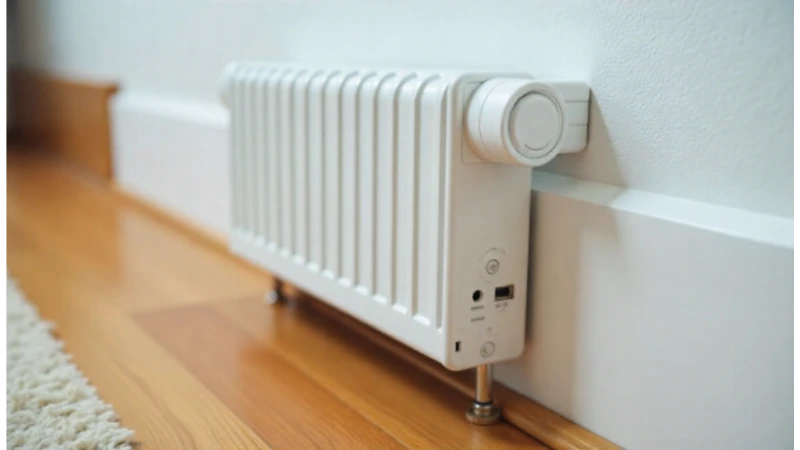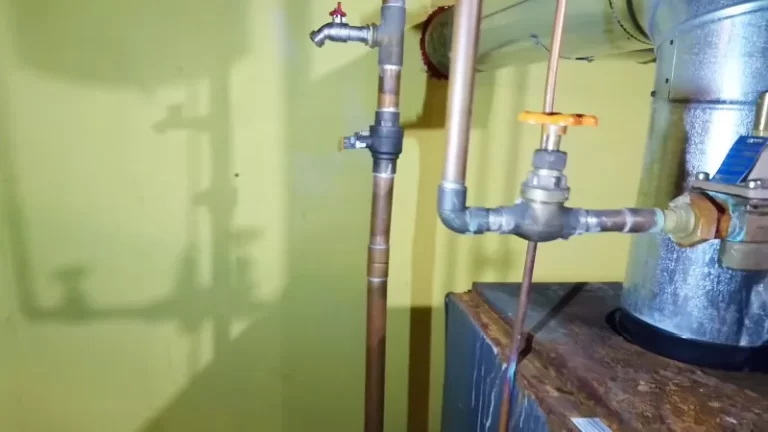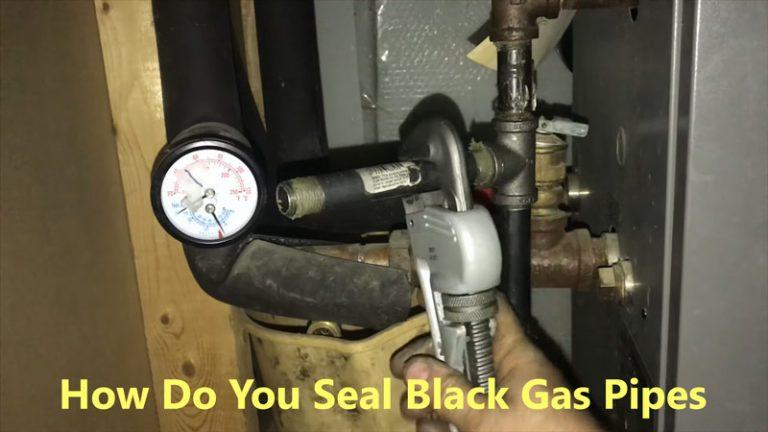Tankless Water Heater Lukewarm? Here’s Your Ultimate Fix
You step into the shower expecting a rush of hot water, but instead, you’re met with a disappointing lukewarm stream. A tankless water heater lukewarm experience is frustrating and defeats the purpose of having an on-demand system. You’re not alone in this; it’s a common issue that leaves many homeowners scratching their heads. But don’t worry, the solution is often simpler than you think.
This comprehensive guide will walk you through the common culprits behind your tankless water heater’s lackluster performance. We’ll explore everything from simple fixes to more complex issues, providing you with actionable steps to get your hot water flowing properly again. Get ready to reclaim your comforting, hot showers.
You'll Learn About
Understanding Why Your Water Is Only Lukewarm
Before you can fix the problem, you need to understand what’s causing it. A tankless water heater that produces only lukewarm water can be a symptom of several underlying issues. Identifying the root cause is the first step toward a lasting solution.
Often, the problem isn’t a major malfunction but a simple issue that’s been overlooked. From incorrect settings to minor blockages, a few key areas are worth investigating first. Let’s delve into the most common reasons for this frustrating issue.

The “Cold Water Sandwich” Effect
One of the most frequent complaints with tankless systems is the “cold water sandwich”. This is when you experience a burst of hot water, followed by a sudden flow of cold water, before it finally heats up again. This happens because there’s a small delay as the heater fires up to meet the demand.
While this is a known characteristic of some tankless models, certain solutions can minimize its impact. Installing a small buffer tank or a recirculating system can help eliminate this annoying temperature fluctuation, ensuring a consistent supply of hot water.
Is Your Unit Overwhelmed by Demand?
A primary reason for lukewarm water is simply demanding more hot water than your unit can produce. If multiple appliances, like the shower and dishwasher, are running simultaneously, the heater might struggle to keep up. This overload is a common issue, especially with improperly sized units.
Every tankless water heater has a maximum flow rate, measured in gallons per minute (GPM). Exceeding this limit will result in water that isn’t heated to the desired temperature. Understanding your household’s peak hot water usage is crucial to ensure your heater can handle the load.
Troubleshooting Your Lukewarm Water Problem: A Step-by-Step Guide
Now that you have a better understanding of the potential causes, it’s time to roll up your sleeves and do some troubleshooting. Following these steps can help you pinpoint and resolve the issue without necessarily needing to call a professional right away.
Start with the simplest checks and work your way to the more complex ones. Many times, a quick adjustment or simple cleaning is all that’s needed to restore your hot water.
1. Check the Temperature Settings and Power Supply
It may sound obvious, but the first thing to check is the temperature setting on your unit’s control panel. It’s possible it was accidentally lowered. Most residential units should be set to around 120°F for a balance of comfort and safety.
Also, confirm that your unit has an uninterrupted power supply. For electric models, check the circuit breaker to ensure it hasn’t tripped. For gas units, make sure the gas valve is fully open and the pilot light (if applicable) is lit.
2. Inspect for Mineral and Sediment Buildup
Hard water is a major enemy of tankless water heaters. Over time, mineral deposits like calcium and magnesium can build up inside the heat exchanger. This limescale buildup acts as an insulator, preventing the unit from heating the water effectively.
This is one of the most common reasons for a tankless water heater lukewarm water problem. Regularly flushing, or descaling, your unit is essential maintenance that can prevent this issue and prolong the life of your heater. This process involves circulating a descaling solution, like vinegar, through the system.
3. Examine the Water Flow Rate
A tankless water heater requires a minimum flow rate to activate the heating elements. If the flow of water through the unit is too low, it won’t turn on or may cycle on and off, leading to fluctuating temperatures. Check for any obstructions that could be reducing your water flow.
Start by cleaning the aerators on your faucets and showerheads, as they can become clogged with sediment. Also, inspect the inlet water filter on the tankless unit itself; a clogged filter can significantly restrict water flow and cause performance issues.
4. Gas Supply and Pressure Issues (for Gas Models)
For gas-powered tankless heaters, an insufficient gas supply can be the culprit behind lukewarm water. The unit needs a specific amount of gas pressure to operate correctly. If the gas line is undersized or there’s an issue with the gas regulator, the heater won’t be able to generate enough heat.
Ensure your gas meter and supply lines are adequately sized for your heater’s BTU rating. This is often a consideration during installation, but issues can arise later. If you suspect a gas supply problem, it is crucial to contact a licensed professional to inspect and address the issue safely.
Advanced Solutions and When to Call a Pro
If you’ve gone through the basic troubleshooting steps and your water is still lukewarm, the problem might be more complex. Certain issues require a deeper understanding of plumbing and electrical systems and are best left to a qualified technician.
Knowing when to call for professional help can save you time, prevent further damage, and ensure your system is repaired safely and correctly. Sometimes, complex electrical components need to be addressed, which is where proper knowledge of water heater conduit wiring becomes essential for a safe and compliant installation.
Is Your Tankless Heater Sized Correctly?
An undersized tankless water heater is a common and frustrating problem. If the unit’s capacity is too low for your household’s needs, you will consistently experience lukewarm water during periods of high demand. This is a critical factor that should be determined before installation.
Calculating the correct size involves considering the maximum number of hot water fixtures you might use simultaneously and the temperature rise needed (the difference between the incoming cold water temperature and your desired hot water temperature). If your heater is undersized, the only long-term solution is to upgrade to a larger unit.
Potential Mechanical or Electrical Failures
Like any appliance, a tankless water heater has components that can fail over time. A malfunctioning flow sensor, a faulty thermostat, or a failing heating element can all lead to inadequate heating. Diagnosing these issues often requires specialized tools and expertise.
For instance, the electrical system powering your unit is critical. An issue with the wiring can lead to poor performance. Understanding the specifics, such as whether you need an 8-2 or 8-3 wire for a tankless water heater, is a job for a professional electrician. Furthermore, ensuring safety protocols like having a GFCI breaker are met is vital. If you’re wondering, does a tankless water heater need a GFCI breaker, the answer is often yes, depending on local codes and manufacturer specifications.
Comprehensive Troubleshooting Chart
To help you summarize the potential issues and solutions, here is a quick-reference table:
| Symptom | Potential Cause | DIY Solution | When to Call a Pro |
|---|---|---|---|
| Water is consistently lukewarm | Incorrect temperature setting | Adjust thermostat to 120°F. | If thermostat is unresponsive. |
| Water temperature fluctuates | “Cold Water Sandwich” or flow rate issues | Clean faucet aerators and inlet filter. Allow water to run briefly before use. | To install a recirculating system or buffer tank. |
| Lukewarm water during high use | Unit is overloaded or undersized | Stagger use of hot water appliances. | To assess unit size and potentially upgrade. |
| Water heats slowly or not at all | Mineral/sediment buildup | Flush/descale the unit with a descaling solution. | If you’re uncomfortable performing the flush yourself. |
| Unit shows an error code | Varies by code (e.g., ignition failure, vent blockage) | Consult the user manual for basic code troubleshooting. | For any persistent error codes or gas supply issues. |
Preventative Maintenance: The Key to Consistent Hot Water
The best way to deal with a tankless water heater lukewarm water problem is to prevent it from happening in the first place. Regular, proactive maintenance is crucial for the longevity and optimal performance of your unit. A little effort now can save you from cold showers and costly repairs down the road.
By incorporating a few simple tasks into your annual home maintenance routine, you can ensure your tankless water heater operates efficiently for years to come. This not only guarantees consistent hot water but also protects your investment.
The Importance of Annual Flushing
As mentioned, mineral buildup is a leading cause of poor performance. Annual flushing is the single most important maintenance task you can perform. For homes with very hard water, descaling may be needed every six months.
You can purchase a tankless water heater flush kit or create your own with a small pump, hoses, and a bucket. This simple procedure will remove the scale that chokes your heater’s efficiency and leads to lukewarm water.
Keep Filters and Vents Clear
In addition to flushing, regularly check and clean the inlet water filter to prevent clogs that restrict water flow. For gas models, it’s also vital to ensure that the air intake and exhaust vents are clear of any obstructions like leaves, nests, or debris.
Proper ventilation is not only essential for performance but also for safety. A blocked vent can lead to a dangerous buildup of carbon monoxide. Make it a habit to visually inspect your unit’s venting system a few times a year.
By understanding the causes, following the troubleshooting steps, and committing to regular maintenance, you can conquer the frustrating issue of a tankless water heater producing only lukewarm water. Enjoy the endless, and consistently hot, water you were promised.


